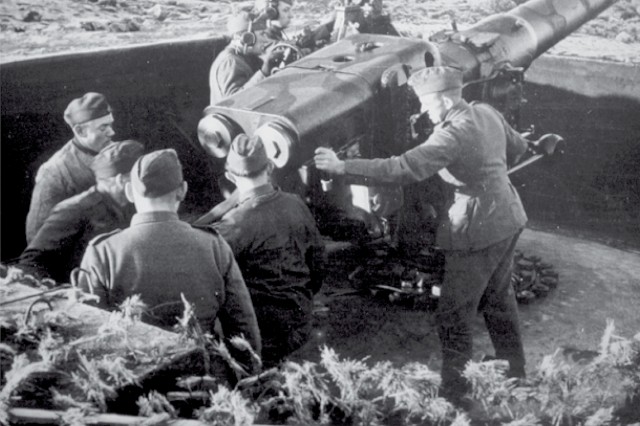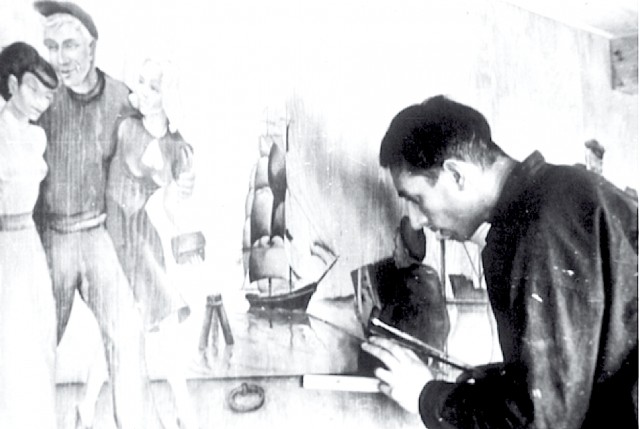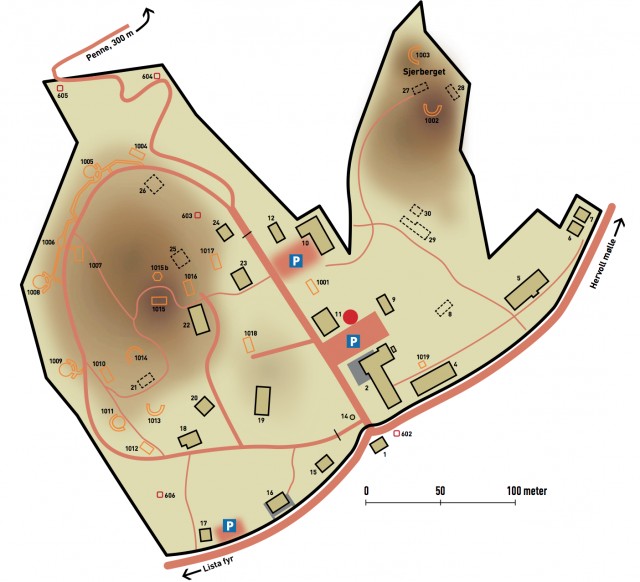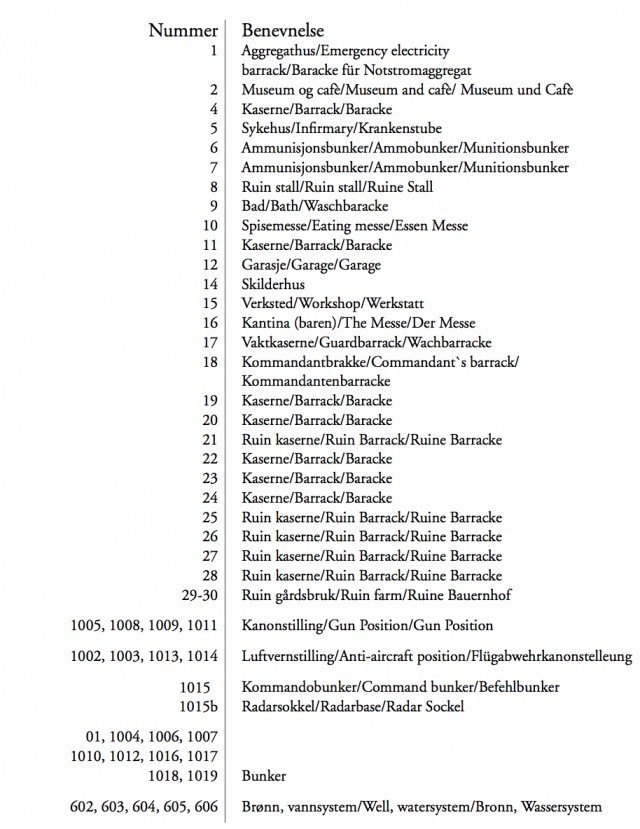Nordberg fort
During World War II (1940-45), large parts of Europe were occupied by Germany. From Gibral- tar in the south to Kirkenes in the north, Germans built military defense systems that would resist attempts at liberation of the occupied territories.
 Gun position at Nordberg, 150 mm cannon.
Gun position at Nordberg, 150 mm cannon.
The Germans rated the Lista peninsula as a strate- gically important location, and as a possible place for an invasion.The result was a major expansion of military facilities and the term fortress was attached to the area - in German “Festung Lista”. Nordberg fort was part of this fortification.
There were three 150 mm guns with a range of 16,000 meters.The task was to bombard the enemy ships that passed or were on their way to the shore.
 German soldier Rudolf Lütdke painting the walls in the canteen in 1942.
German soldier Rudolf Lütdke painting the walls in the canteen in 1942.
About 100 soldiers were responsible for man- ning the guns.Along with the coastal forts Hågåsen (Hidra, Flekkefjord),Varnes, Marka, Loshavn and Hausvik (Lyngdal) they covered the entire sea area outside Lista.
Cannon fire was controlled from the command bunker that sits atop the seaside. Atop the command bunker is the foundation for a rangefinder. Close by stood a six meter high radar. There were two anti-aircraft positions at both heights. The guns of Fort Nordberg was not actively used, and the fort was never directly attacked from the air. Allied planes concentrated on bombing Lista Airport and the German convoys at sea.
The fort was largely a self-contained unit with its own water supply, power supply, farm and green- house, cinema, bar, hospital, workshops and camps. Nordberg fort as a war memorial is unique in Europe, with its well-preserved buildings in wood, of which 15 are original.The murals in the Messe depict soldier and sailor life and were painted by one of the German soldiers who served here.
The fort is located in a landscape of national importance, western Lista, which is rich in cultural heritage, biodiversity and active agriculture. Among the cultural heritage sites we find rock carvings at Penne in the north and Hervoll mill in the east.
From 1945 to 2001, Nordberg fort was used as an exercise area and mobilization and storage space for the NorwegianArmed Forces.The area is owned byVest-Agder County Council and managed in partnership with Lista museum.The buildings and equipment is protected by law.

